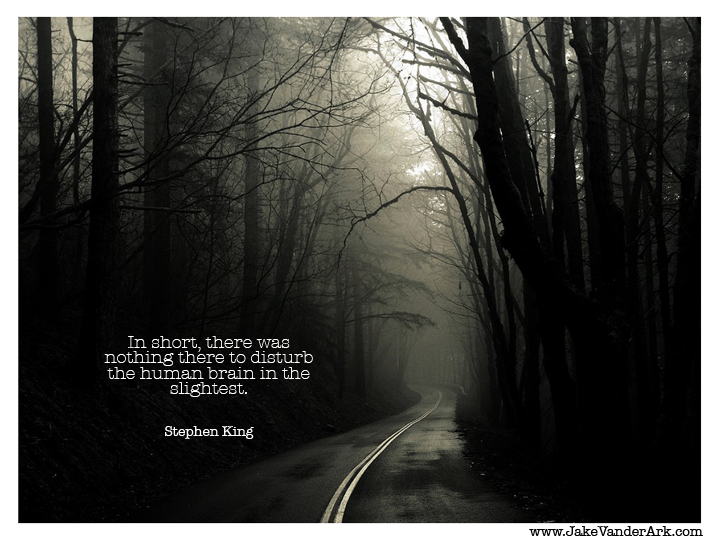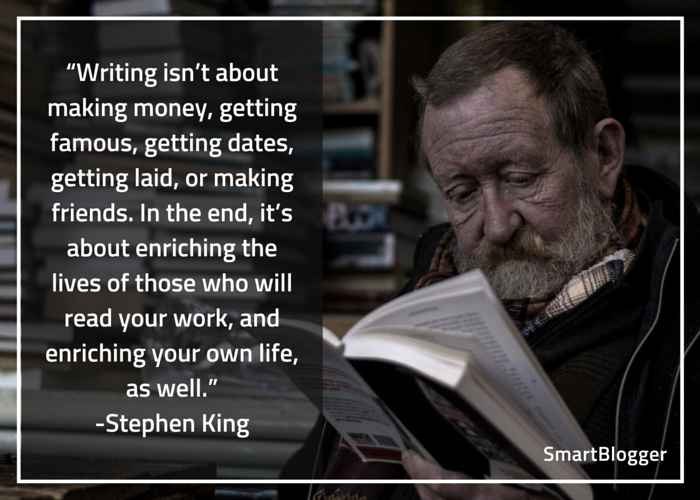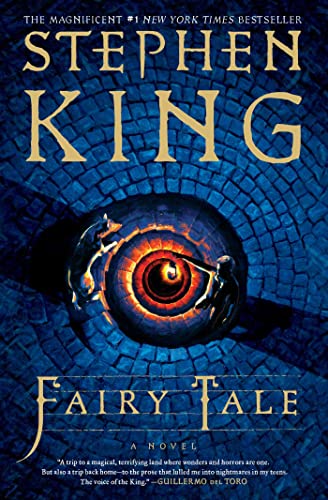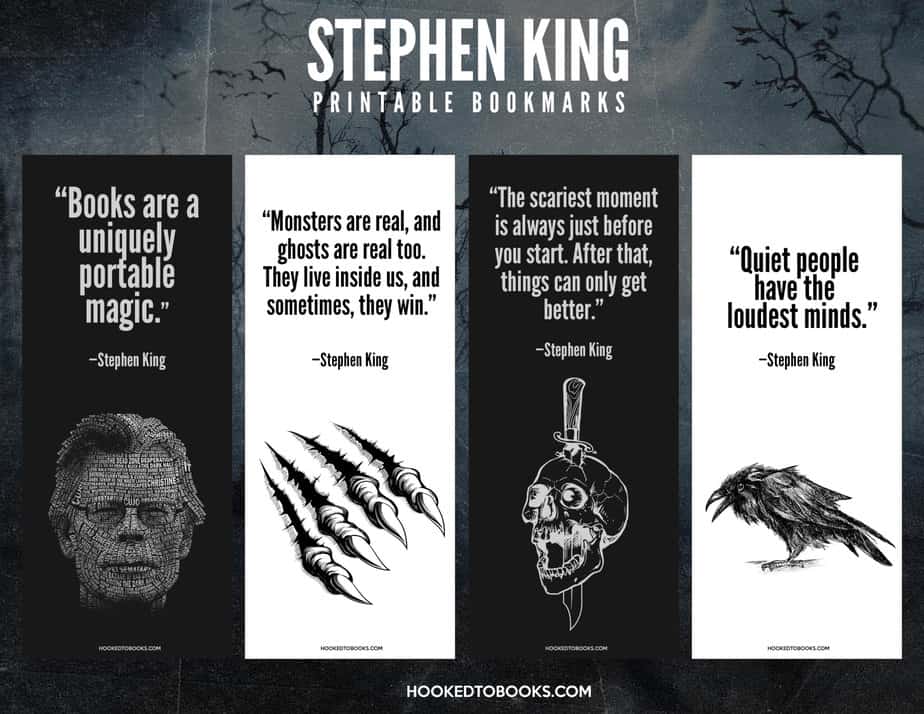Stephen King Quotes: The Art Of Creating Atmospheric Horror
If you’re a fan of horror, then you’ve most likely heard of the master of the genre himself, Stephen King. With his chilling and atmospheric tales, King has captivated readers for decades. But have you ever wondered what makes his writing so effective at creating an eerie and spine-tingling atmosphere? Well, look no further! In this article, we’ll delve into the art of creating atmospheric horror through the lens of Stephen King quotes.
When it comes to horror, Stephen King is the undisputed king. His ability to weave intricate and unsettling narratives has made him a household name in the literary world. But what sets King apart from other horror writers is his knack for creating an atmospheric experience that lingers long after the final page has been turned. Through his vivid descriptions, bone-chilling dialogue, and uncanny ability to tap into our deepest fears, King crafts stories that transport us to a world of darkness and suspense. So, whether you’re a die-hard fan or simply curious about the secrets behind King’s chilling tales, get ready to explore the art of creating atmospheric horror through a collection of his most haunting quotes.

Stephen King Quotes: The Art of Creating Atmospheric Horror
Stephen King is a master of horror, known for his ability to create atmospheric and chilling stories that keep readers on the edge of their seats. His unique writing style and knack for storytelling have made him one of the most celebrated authors in the genre. In this article, we will explore some of Stephen King’s most memorable quotes about the art of creating atmospheric horror and delve into the techniques he employs to captivate his readers.
The Power of Descriptive Language
One of the key elements that sets Stephen King’s writing apart is his masterful use of descriptive language. His ability to paint a vivid picture with words allows readers to fully immerse themselves in the world he creates. King understands that the key to creating atmospheric horror lies in the details. By carefully describing the setting, characters, and events, he is able to establish a sense of unease and tension that lingers throughout his stories.
In his own words, King emphasizes the importance of descriptive language: “Description begins in the writer’s imagination, but should finish in the reader’s.” This quote encapsulates his belief that the reader’s experience is just as important as the writer’s intent. By providing detailed descriptions, he invites readers to engage their own imaginations and become active participants in the story.
The Role of Fear and Vulnerability
Another recurring theme in Stephen King’s work is the exploration of fear and vulnerability. He understands that true horror stems from tapping into our deepest fears and insecurities. By creating characters who are relatable and vulnerable, King is able to elicit a strong emotional response from his readers.
In one of his quotes, King states, “We make up horrors to help us cope with the real ones.” This insight highlights his understanding of the human psyche and how horror fiction serves as a way to confront and process our own fears. Through his writing, he invites readers to confront their own anxieties and find solace in the fictional world he has created.
King’s characters often find themselves in extraordinary circumstances, facing unimaginable horrors. By placing ordinary individuals in extraordinary situations, he amplifies the sense of vulnerability and emphasizes the fragility of human existence. This technique not only adds depth to his characters but also heightens the tension and suspense in his stories.
The Importance of Building Suspense
Suspense is a crucial element in atmospheric horror, and Stephen King is a master at building it. He understands that the anticipation of something dreadful can be just as terrifying as the event itself. Through his quotes, he sheds light on the techniques he employs to keep readers hooked and on the edge of their seats.
In one of his notable quotes, King explains, “The trust of the innocent is the liar’s most useful tool.” This quote underscores the element of deception in his storytelling. By establishing a sense of trust and then subverting it, King keeps readers guessing and maintains a constant state of unease. This technique is a hallmark of his writing and contributes to the atmospheric nature of his stories.
The Art of Subtle Horror
While Stephen King is known for his use of shocking and gruesome imagery, he also understands the power of subtlety. In his quotes, he emphasizes the importance of leaving room for the reader’s imagination to fill in the gaps. By hinting at horrors rather than explicitly describing them, he taps into the reader’s own fears and allows their imagination to run wild.
One of King’s quotes perfectly captures this approach: “The most important things are the hardest things to say.” He recognizes that sometimes the scariest moments are the ones left unsaid, allowing the reader’s mind to conjure up their own terrifying images. This technique adds depth and complexity to his stories, leaving a lasting impact on readers.
In conclusion, Stephen King’s quotes about the art of creating atmospheric horror offer valuable insights into his unique approach to storytelling. Through his use of descriptive language, exploration of fear and vulnerability, and skillful building of suspense, he creates a truly immersive and chilling reading experience. Whether you’re a fan of horror or simply appreciate exceptional storytelling, Stephen King’s quotes provide a glimpse into the mind of a master of atmospheric horror.
Key Takeaways: Stephen King Quotes – The Art of Creating Atmospheric Horror
- Creating atmosphere is crucial in horror storytelling.
- Stephen King believes that fear is best when it’s subtle and creeping.
- King emphasizes the importance of using vivid and specific details to enhance the horror.
- Characters should be relatable and vulnerable to make the horror more impactful.
- Building tension through pacing and suspense is key to creating atmospheric horror.
Frequently Asked Questions
Q: How does Stephen King create atmospheric horror in his writing?
In his writing, Stephen King masterfully creates atmospheric horror through his use of vivid descriptive language and attention to detail. He sets the stage for his stories by painting a rich and immersive world that readers can easily visualize. He taps into universal fears and anxieties, exploiting them to build suspense and tension throughout his narratives.
King also understands the power of suggestion, often leaving certain elements of horror to the reader’s imagination. This allows readers to fill in the gaps with their own fears and creates a more personalized and chilling experience. By combining these techniques, Stephen King creates a sense of dread and unease that lingers long after the reader has finished the book.
Q: What role do quotes play in creating atmospheric horror?
Quotes in Stephen King’s work play a crucial role in creating atmospheric horror. They serve as powerful tools to convey the emotions, thoughts, and fears of the characters, further immersing the reader into the story. King’s carefully chosen words and phrases capture the essence of the horror he is portraying, evoking a visceral response from the reader.
Additionally, quotes can be used to foreshadow events, build suspense, or provide insight into the psychological state of the characters. By incorporating these quotes into his writing, King adds depth and complexity to the atmospheric horror he creates, making it more impactful and memorable.
Q: How does Stephen King use setting to enhance atmospheric horror?
Setting plays a crucial role in Stephen King’s ability to enhance atmospheric horror. He carefully selects locations that are inherently eerie or unsettling, such as haunted houses, abandoned buildings, or small towns with dark secrets. These settings serve as a backdrop for the unfolding horror and create an atmosphere of unease.
Furthermore, King uses his descriptive prowess to bring these settings to life, making them feel tangible and immersive. By vividly describing the sights, sounds, and smells of the environment, he heightens the reader’s sense of dread and anticipation. The setting becomes a character in itself, amplifying the atmospheric horror and adding another layer of intensity to the story.
Q: What role does character development play in Stephen King’s atmospheric horror?
Character development is a crucial element in Stephen King’s atmospheric horror. He crafts complex and relatable characters that readers can invest in emotionally. By establishing their desires, fears, and vulnerabilities, King creates a strong foundation for the horror to unfold.
Through the development of his characters, King establishes a sense of empathy and connection between the reader and the protagonist. This makes the horrors they face all the more terrifying, as readers become deeply invested in their well-being. By intertwining the personal journeys of his characters with the atmospheric horror, King creates a more immersive and emotionally impactful reading experience.
Q: How does Stephen King’s use of suspense contribute to atmospheric horror?
Suspense is a key element in Stephen King’s atmospheric horror. He expertly builds tension throughout his narratives, keeping readers on the edge of their seats. Through careful pacing and a well-crafted plot, King creates a sense of anticipation and unease that permeates his stories.
King often employs cliffhangers, twists, and unexpected turns to keep readers guessing and engaged. By withholding information or slowly revealing crucial details, he adds layers of suspense that heighten the overall atmospheric horror. This constant sense of anticipation and uncertainty keeps readers hooked and intensifies the impact of the horror elements in his writing.
27 BEST Quotes📜 by the “King of Horror”… STEPHEN KING
Final Thought: Mastering the Art of Atmospheric Horror with Stephen King Quotes
As we delve into the world of atmospheric horror, it becomes evident that Stephen King’s quotes hold a treasure trove of wisdom for aspiring writers in this genre. With his unique ability to create chilling atmospheres that send shivers down our spines, King has become a master of his craft. By understanding and incorporating his insights, we can enhance our own storytelling and captivate readers with bone-chilling tales.
Stephen King’s quotes on atmospheric horror remind us of the importance of setting the stage for our stories. He emphasizes the significance of creating a vivid and immersive world that captures the reader’s imagination. As writers, we must paint the scene with descriptive language, engaging all the senses to transport our readers into the heart of our eerie narratives. By doing so, we can evoke a palpable sense of foreboding and anticipation, heightening the suspense and ensuring a truly immersive experience.
Furthermore, King’s quotes highlight the power of relatable characters in atmospheric horror. He emphasizes the significance of crafting well-rounded protagonists that readers can invest in emotionally. By fleshing out our characters with depth and complexity, we create a stronger connection between the audience and the story. When readers care about the fate of our characters, their fear becomes amplified, and the stakes feel all the more real.
In conclusion, Stephen King’s quotes provide invaluable insights into the art of crafting atmospheric horror. By embracing his wisdom and applying it to our own writing, we can transport readers into spine-tingling worlds and leave them yearning for more. With each carefully chosen word and expertly crafted scene, we have the power to create stories that will linger in the minds of readers long after they’ve turned the final page. So let us embark on our writing journeys, armed with the knowledge and inspiration bestowed upon us by the great Stephen King.






